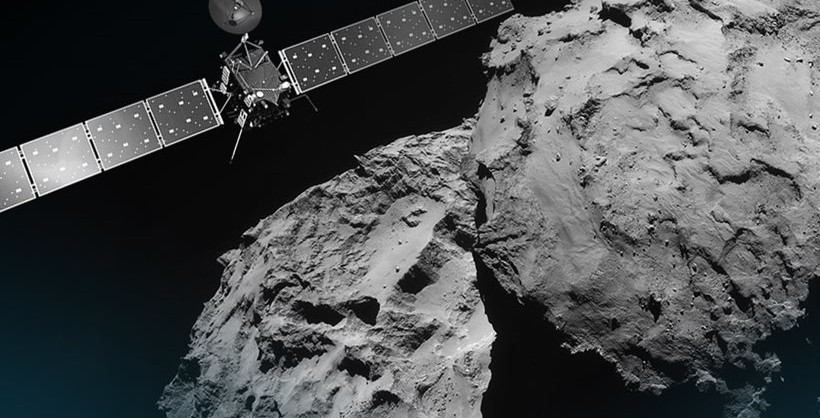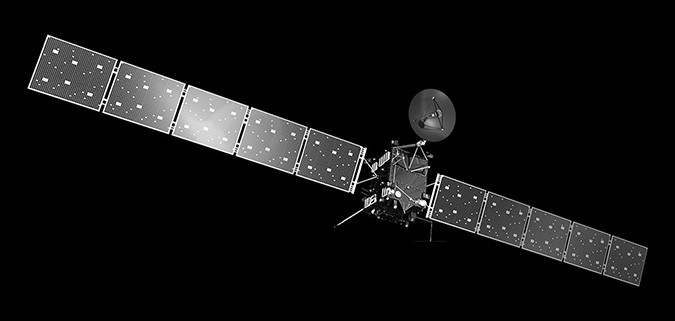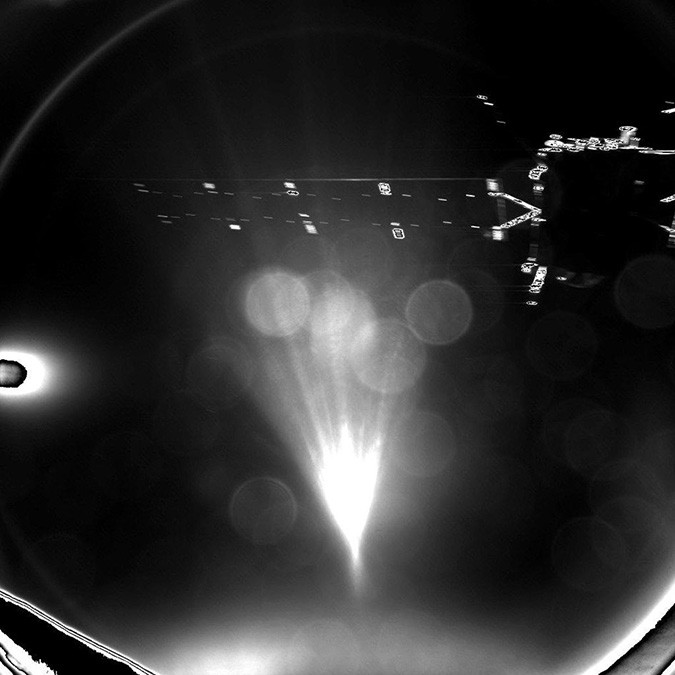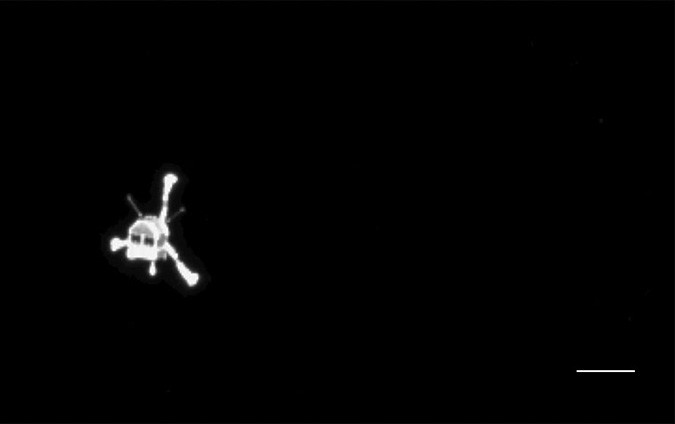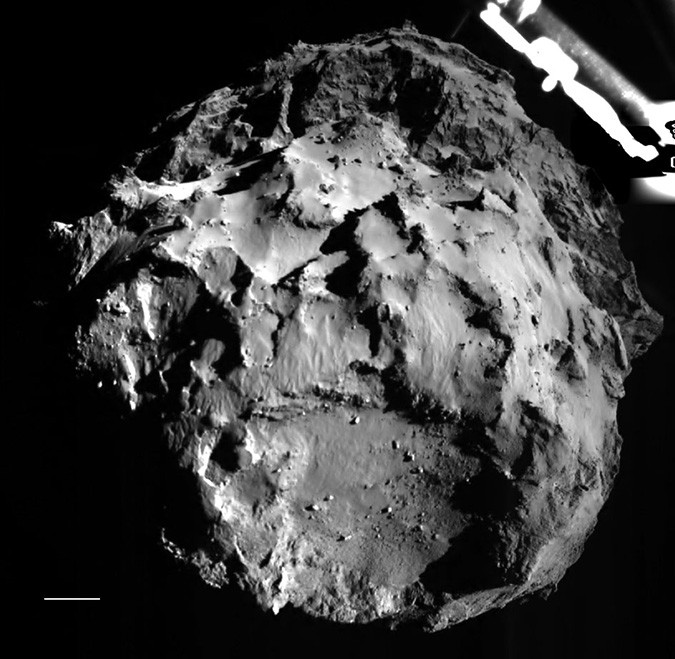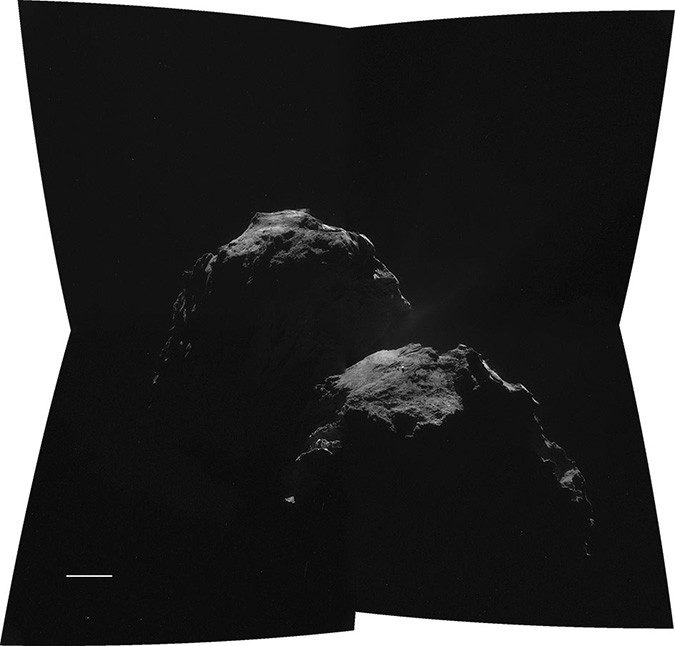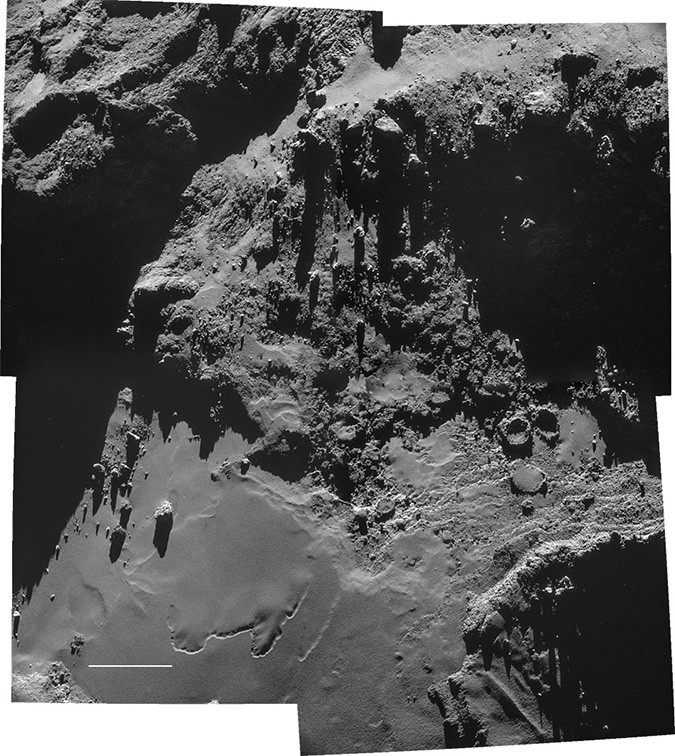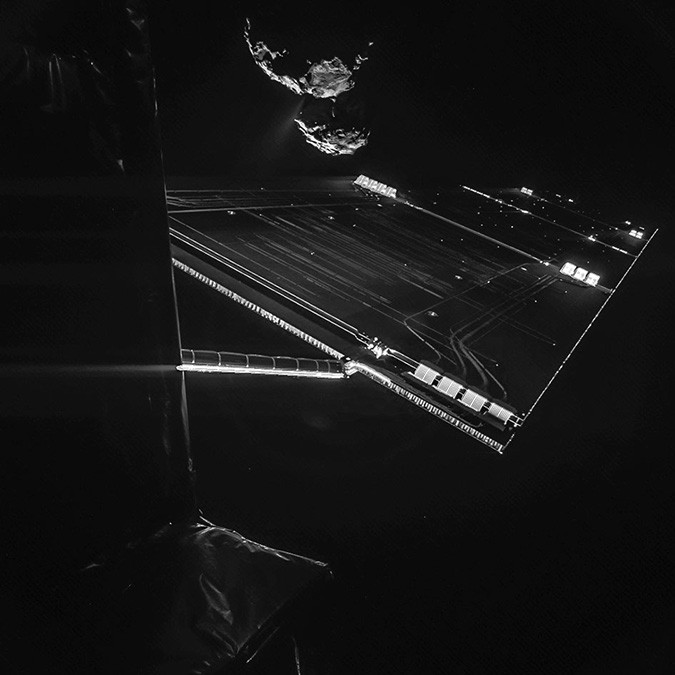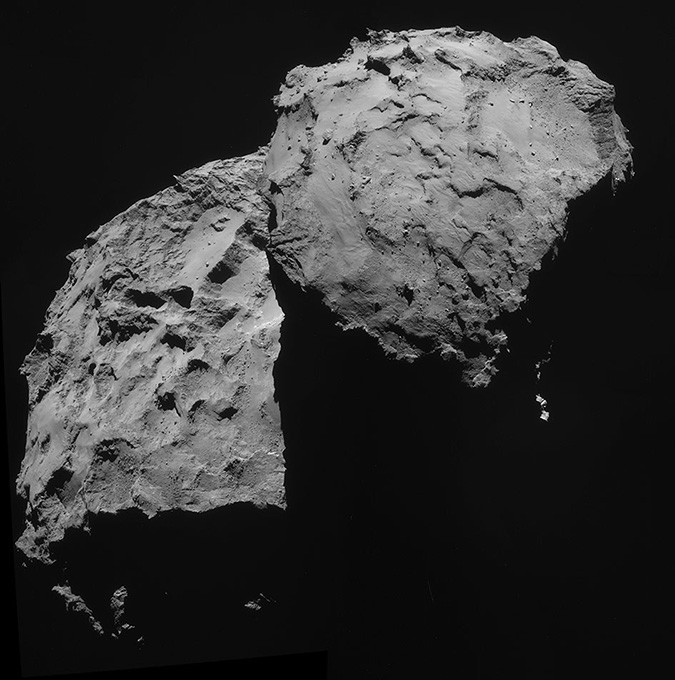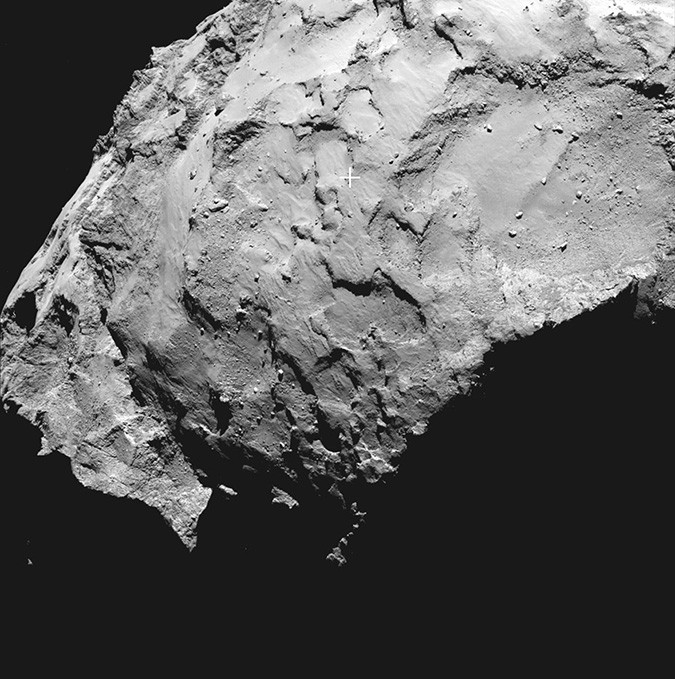A little more about Rosetta: launched in 2004 and arrived at Comet 67P/Churyumov-Gerasimenko on 6 August 2014. It is the first mission in history to rendezvous with a comet, escort it as it orbits the Sun, and deploy a lander to its surface. Rosetta is an ESA mission with contributions from its member states and NASA. Rosetta’s Philae lander is provided by a consortium led by DLR, MPS, CNES and ASI.
Several sites had been looked at for the landing of Philae. Now, after 10 hours of integration, the probe has been able to locate itself on the comet proper, as well as being able to carry on with the first ever tomography of a small body, in this case, the comet. The magnetic field of the comet has also been studied by the probe, which will give us knowledge of whether the comet has a magnetic field or not. Nearby ground to the final landing site has been analyzed, and images, as seen earlier today, have been publicized.
Philae, unfortunately, landed very near the side of a cliff, below it, which limits its vision somewhat, as it finds itself in its shadow. It has landed “vertically”, compared to its original landing site and one of its three legs is hanging out in open space, so it takes extremely sensitive maneuvers to operate it, as one may guess. 4.6 billion years of comet ground are now in the grasp of scientists who are looking to study it extensively with mass spectrometers. High resolution pictures are still coming, since many of the pictures taken by the probe have not been processed yet.
The descent and floating debris:
From the images taken 40 seconds before the probe landed, it is obvious that the comet is covered by debris and dust. It is also known that dust is mobilized around the comet, decimeters to centimeters big, either by sublimation of gas or another reason that scientists have yet to discover.
The story of the bounces:
The Rosetta probe landed at approximately 1m per second, bouncing up at around 38cm/s, covering a distance of around 1km in two whole hours, which explains why it’s hard to discover the exact landing spot. After the second bounce, at a slightly smaller speed, of 3cm/s for seven minutes, Philae finally settled where it is.
Many instruments who are not in need of mechanical activation are running even when there is no radio link with Earth, since the comet orbits below the horizon. Of course, there has to be care in activating mechanisms whenever there is a link due to potential breaks in communication, so scientists are taking great care in how and when they do it.
The current status of Rosetta:
The situation with the Rosetta orbiter, according to the MCR (Mission Control Room), is very good. It passed the lander, establishing radio link earlier today. Obviously, however jubilant the mood in the MCR can be, their task is still monumental. Passing a small orbiter over hundreds of kilometers of comet and targeting a radio link to a small probe on the side of a cliff, is obviously terribly difficult, but the ESA is managing it well.
The search for the lander:
There is no confirmed location on where exactly the lander is, which cliff it is near, but ESA are looking for it after increasing the contrast for the next camera shots, which they will then compare to the map itself.

